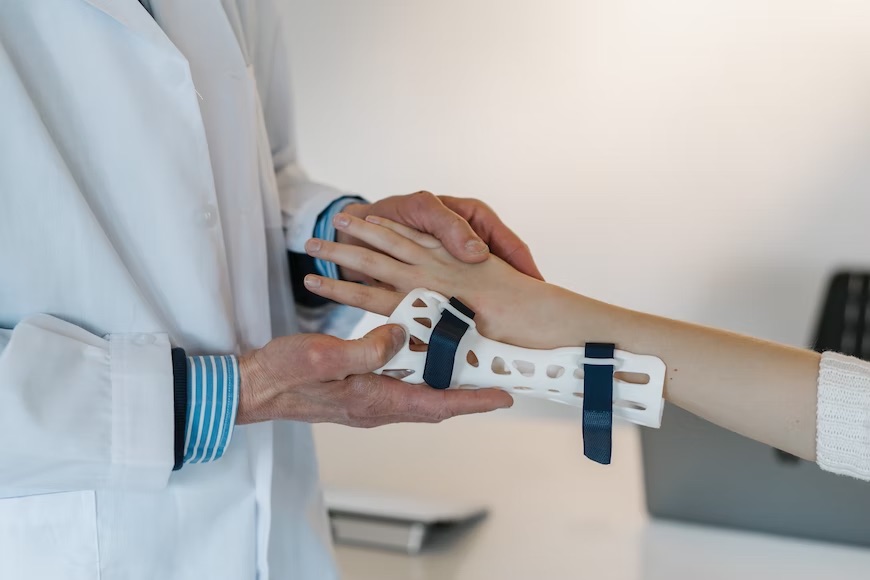Arthritis is a relatively common condition which causes pain and inflammation in the joints or a particular joint. Around 10 million cases of Arthritis have been registered in the UK. Arthritis can affect a person of any age including young children, but is usually associated with older people.
Types of Arthritis
There are two common types of Arthritis. These are known as:
Osteoarthritis
Osteoarthritis is the most common kind of arthritis in the UK. This type affects around 8 million British people.
Usually , osteoarthritis develops in adults who are over the age of 40 or older. Furthermore, it is more commonly found in women than men, as well as people who have a family history of the condition.
Nevertheless, the condition can develop at any age and in anyone. Usually, it the condition develops before the age of 40 it is as a result of an injury or the person has a different joint related condition.
Osteoarthritis first affects the smooth cartilage lining of a joint. What this does is it makes movement much more difficult than usual. In turn this leads to stiffness and general pain. Once this cartilage lining starts to thin out and become rough, the ligaments will have to work harder which causes further swelling and the formations of bony spurs, which are called osteophytes.
Loss of this cartilage can lead the bones rubbing together in severe cases. This will lead to the shape of the joint being altered and the bones being forced out of their normal position in the body.
The joints that are most affected by this particular type of arthritis are
- The Hands
- The Spine
- The Hips
- The Knees
Rheumatoid arthritis
Rheumatoid arthritis is a type of arthritis that is estimated to affect over 400,000 people in the UK. Typically, this type starts for a person when they are between the ages of 40 and 50 years old. It has been found through research that women are three times more likely to be affected by this than men are.
The main way that Rheumatoid and osteoarthritis differ is that Rheumatoid arthritis occurs when the immune system found in the body directly targets affected joints. This in turn leads to swelling and pain in and around the affected area.
The outer covering of the joint is what is initially affected by rheumatoid arthritis. This can then spread across the joint which leads to more swelling and results in a change in the shape of the joint.
People who have this type of arthritis are prone to developing further problems with other organs or tissue in their bodies.
Other, less common, types of arthritis and related conditions
- Cervical Spondylosis
- Ankylosing spondylitis
- Lupus
- Fibromyalgia
- Gout
- Psoriatic Arthritis
- Enteropathic arthritis
- Reactive Arthritis
- Secondary Arthritis
- Polymyalgia rheumatica
Symptoms of Arthritis
The symptoms of arthritis that a person may experience will vary depending on what type of arthritis they have. Because of this, it is important for you to get an accurate diagnosis if you have any of the following:
- Pain, stiffness and/or tenderness in your joints or in a particular joint
- Joints which are inflamed, including the surrounding areas
- Restricted movement in your joints
- Red skin that is warm to the touch over the area of the affected joint
- weakness and muscle wasting
Arthritis in children
As mentioned, the condition is often associated with older people, but it can also manifest in children. Around 15,000 children are affected in the UK. The most common type of arthris that children get is what is known as juvenile idiopathic arthritis (JIA). This causes pain and inflamtion in the joints, and the exact cause is still unknown.
Treating Arthritis
Like with a lot of other medical conditions, there is no cure for Arthritis. However, there have been many treatments developed that are used to help slow down the condition and ease the symptoms.
For osteoarthritis, the treatments that are typically prescribed include:
- Painkillers
- Corticosteroids
- Nonsteroidal anti-inflammatory drugs (NSAIDs)
In more severe cases of osteoarthritis, surgery may be required. The procedures advised may include:
- A joint replacement (arthroplasty)
- A joint fusion (arthodesis)
- Osteotomy (this involves cutting the bone to realign it)
Since they are different conditions, the treatments for rheumatoid arthritis are not the same. The treatment for this type of arthritis aims to slow down the progress of the condition as well as minimising the inflammation and swelling of the joint and the surrounding area in order to prevent any damage being done to the joints. The typical treatments for rheumatoid arthritis include:
- Painkillers
- Disease modifying anti-rheumatic drugs (DMARDs)
- Regular physiotherapy
- Regular Exercise
For more information about treating this, feel free to contact us here.

